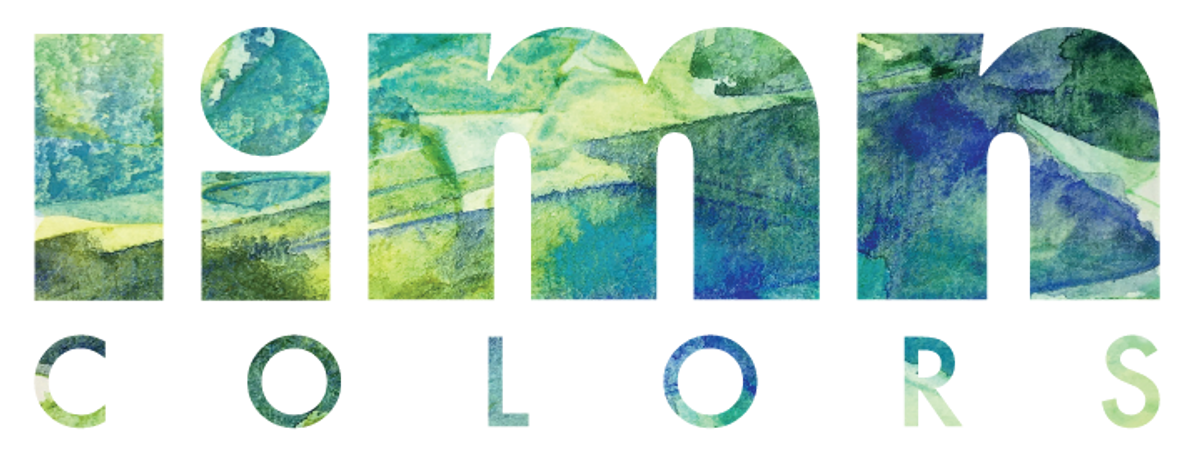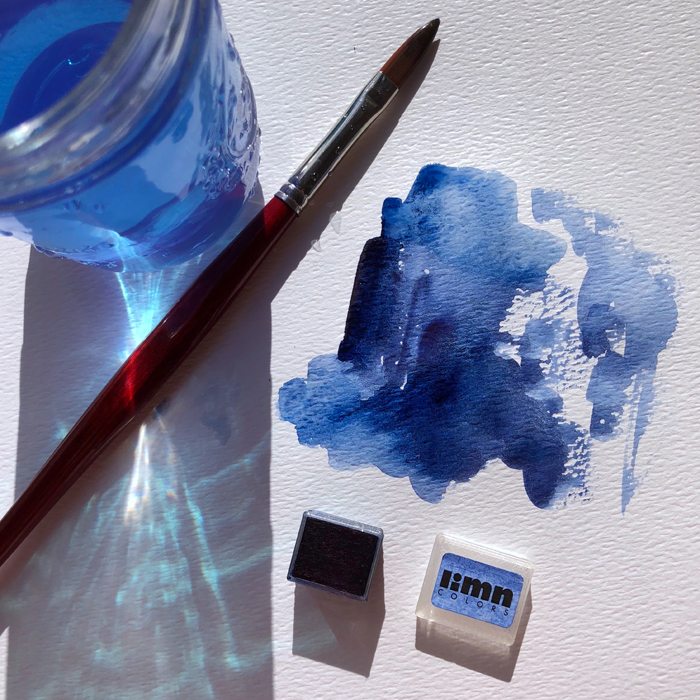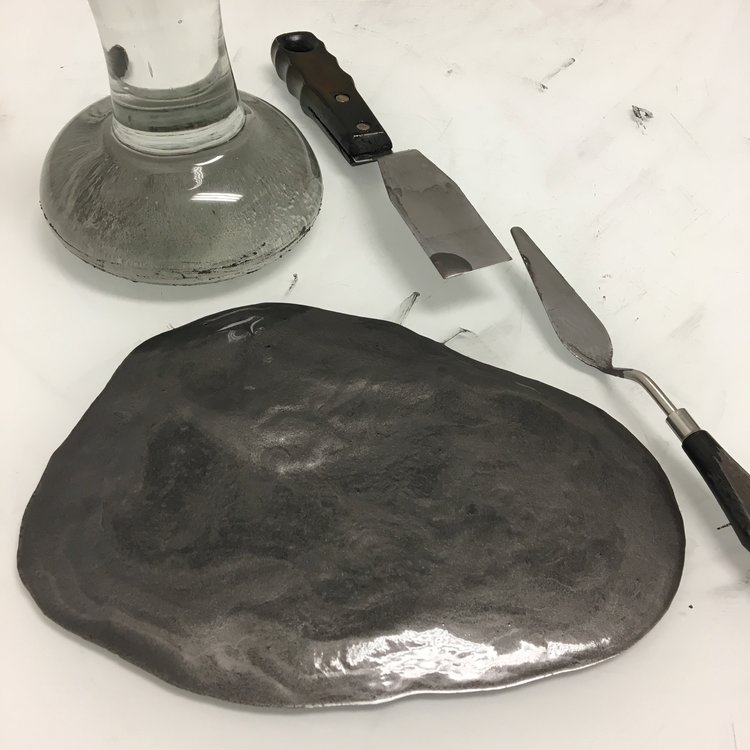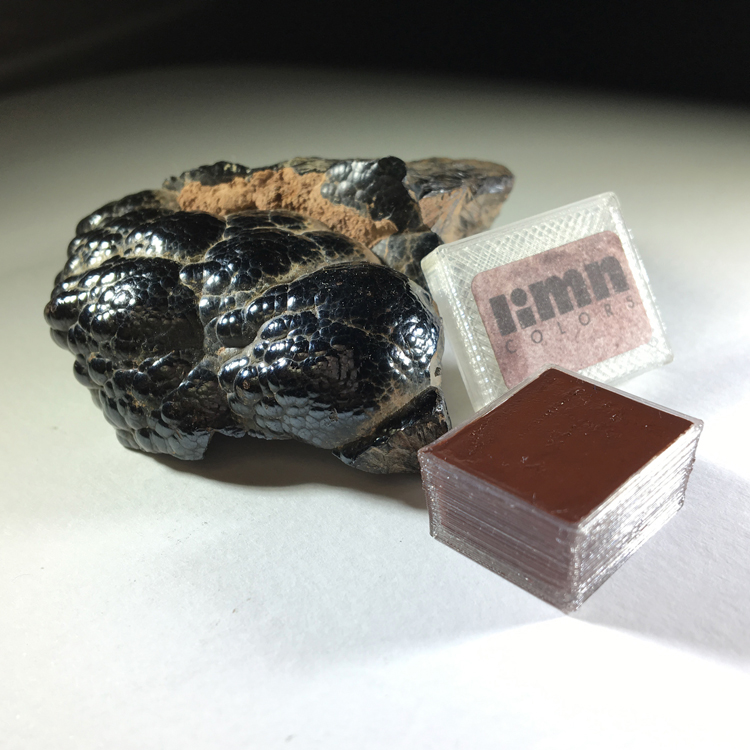Introducing Limn Colors
FLAX launches a brand new line of watercolors
We are thrilled to announce the launch of a new line of handmade watercolor paints to FLAX! Limn Colors are made from scratch in small batches with premium pigments and no fillers, highlighting the unique characteristics of each individual pigment. The product line is hand-mulled in Berkeley California, featuring historic and traditional colors alongside modern hues. In anticipation of the launch we asked Amanda Hinton, creator of Limn Colors, to talk about how she got started in paintmaking and her unique perspective on watercolor painting in relation to the behaviour of the pigments.
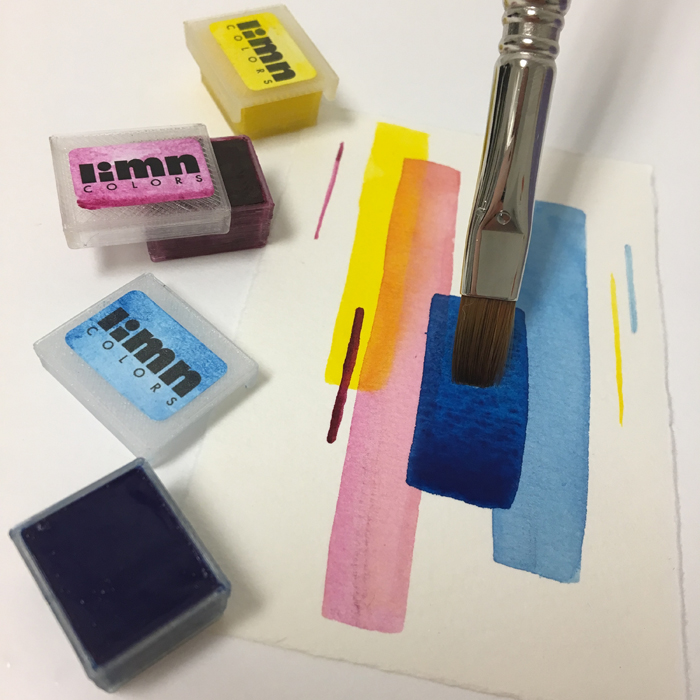
Amanda, you seem to have a very personal approach to making paints, exploring the way each individual pigment performs as a paint, researching the history of the materials you choose, and even 3-D printing your own paint pans. You are obviously very passionate about paintmaking. How did this passion start and what made you decide to turn it into a business?
AH: I initially stumbled into it because I was curious about making ink for my fountain pens. I was captivated by stories of the pigments and colors throughout history. The more I learned, the more I sought. I took a pigment class. I took a painting class. I kept researching. On the weekends, I would experiment with binder recipes, different binder-to-pigment ratios, mulling techniques, and curing times. I took notes on all the things I tried, what worked, and more often what didn’t. And over time, I built up a set of production processes, a collection of paint formulas, and a distinctive brand and packaging.
There was a year where I kept asking “Is this real?” as I tried to figure out whether paintmaking was just a hobby with insurance and incorporation documents. But I had great reviews and repeat customers. I loved to use the paint; I believed in the product; it was a joy to share with others. Towards the end of 2017, I quit my job and started working on Limn Colors full-time. In my previous roles, what I found most rewarding was helping people be creative. I saw that as my job when managing a marketing team and more obviously when I worked at The Crucible. That activity is at the core of Limn Colors: making things that help people make things.

Your paints differ from most others on the market in that they contain no fillers and are 100% pigment and binder, allowing the unique and different characteristics (transparency, tinting strength, opacity) of each pigment to shine. How does this affect the way one paints? Is this something you noticed once you began making your own paint, or is it a quality you were interested in from the start?
AH: You have to get to know each of the paints in our line. Vivianite, phthalo blue, and ultramarine blue are very different from each other - not only in color, but in transparency, granulation, staining power, and tinting strength. You are not just painting with a color, but a host of properties that affect the appearance of the paint on the paper. Some are better for glazing, some take on a life of their own in a wet wash, some work wonderfully on dark paper.
|
|
|
|
| ultramarine blue | indanthrone blue |
Those unique properties became increasingly important to me the more I used the paint and paid attention to my customers. At shows or events, different people were drawn to different paint swatches, enamoured with the vivid clarity of quinacridone magenta or the richness of burnt sienna or the shimmer of graphite and gold. I have seen paintings done only in caput mortuum that highlighted the range of values and the interesting blossoming textures. I noticed that even people who had a bulging watercolor palette would buy our more unusual colors. I’ve had people actually gasp when they first try our paint because it’s so highly pigmented; the power of the pigment has not been diminished with filler, which makes even our basic primaries unusual. How others responded to the paints aligned with my own infatuations with pigments, reinforcing the idea that the unique, excited properties of each pigment are worth preserving and emphasizing.
|
|
|
|
| mulling graphite | caput mortuum |
You seem to have both an appreciation for the historical practices of paint making, as well as an interest in new technologies and innovations in the trade. How do you find a balance?
AH: Well, I do get a kick out of putting an ochre, with its 100,000 years of history, into a 3d printed container.
I enjoy being a part of an artisanal field with a long lineage. Even with pigment inventions, trend changes, or new paint effects developed, so much about painting techniques and materials has remained the same for centuries. I pick up what I can from the art historians and colormen of yesteryear, but I’m definitely not a purist or making paint the hard way just for the sake of the struggle. Similarly, with the more modern choices I’ve made. I first started 3d printing the containers to solve a problem rather than to be futuristic. I wanted a clear pan instead of the familiar white one, a lid instead of those paper wrappers that stick to the paint, and to have a self-contained unit that protected during shipping and travel.
I am fascinated by how the old and new intertwine. I love picking up old paint and painting books and seeing how knowledge has progressed: which traditions have persisted, which died out, and which evolved. I like to have the option of both natural hair quills and synthetic brushes, handmade and mould made papers. It’s incredible to read how Egyptian blue and Mayan blue were both lost then rediscovered. How cool to paint a medieval illumination design today with historically accurate pigments. It’s wonderful to be able to learn from all of history right up to this minute, and then to go forward remixing and creating anew.
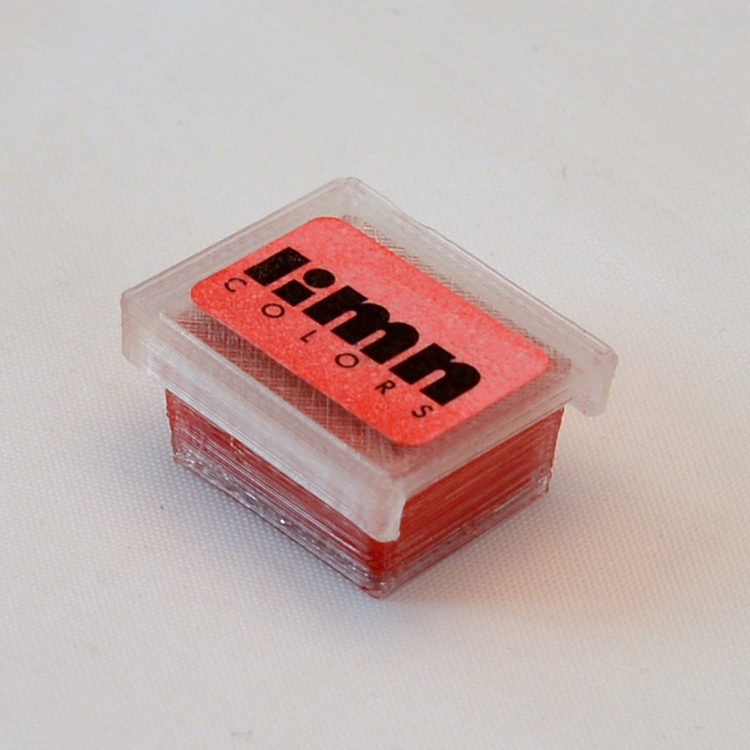
What are the easiest, and what are the hardest pigment to work with?
AH: The earth colors, such as limonite, caput mortuum, and vivianite, are typically easier to mull and cure. The pigment particles are larger and don’t tend to agglomerate, and the paints dry in the pans more quickly and evenly. The very fine, micronized pigments, like quinacridones and phthalos, take more physical effort to push into a dispersion, and the paints need more intervention as they are compressed and topped off multiple times during the curing period. Unsurprisingly, it’s no fun to clean up after making the staining pigments, but the beautiful colors make up for the hassle. The metallic colors and graphite behave oddly on the workbench, almost like an oobleck or dilatant substance, which is entertaining but more difficult to mull.

Perylene maroon on the workbench
You teach watercolor painting classes, how much do you find yourself talking about the history and science of the paints in your classes?
AH: Students have been most interested in how to use watercolor paint: how to lay a wash, the effects of wet-on-wet versus glazing versus dry brushing, mixing colors. But we do discuss the different types of pigments and how they impact what is happening on the mixing tray and the paper. A basic understanding of the pigments’ properties—is it staining, opaque, granulating, organic or inorganic—will help you make better decisions and get the outcomes you are looking for. We explore those characteristics during the demonstrations and hands-on activities in the class.
Personally, I spend a lot more time trying to understand why the paint is behaving a certain way, figuring out which pigments work together or don’t, and experimenting with textures than I do rendering realistic compositions. So, naturally, my approach to talking about watercolor is by talking about the materials themselves.
Students take home a booklet with additional information about the subjects covered, so there’s further reading provided. I welcome follow-up questions after class or a one-on-one at the studio. And I take the opportunity to go full-on color nerd in the blog at LimnColors.com/color-story.
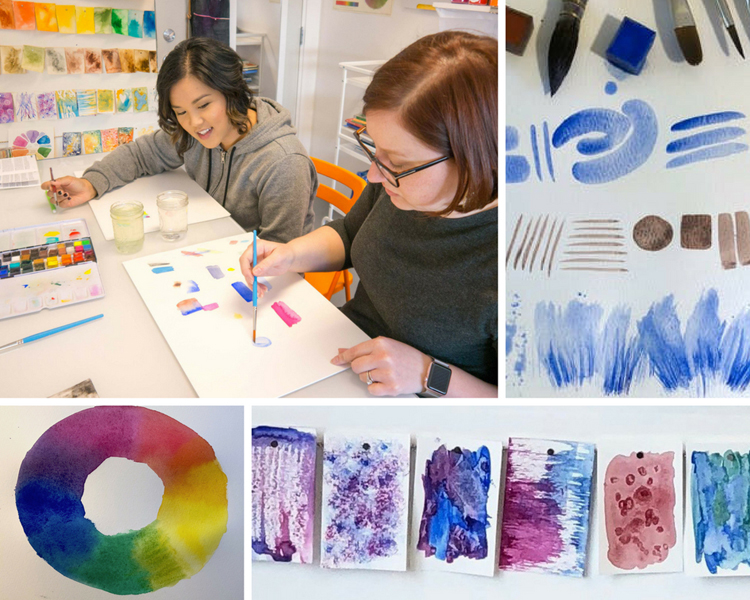
Limn Colors are now available at the FLAX Oakland store and will be coming soon to our Fort Mason location. You can meet the creator of Limn Colors at our watercolor class, Putting Paint to Paper, presented in partnership with TRY Studio on Sunday, September 30, 2018. Meet Amanda, learn from her knowledge and unique perspective on watercolor painting, and get your hands on these beautiful handmade watercolors.
CLICK HERE to sign-up for Amanda's class.
Sign up for our weekly newsletter and keep an eye on our online event listings to be the first to sign-up for our classes as they become available.

Recent Posts
-
Philip Flax, A Life Well Lived
May 1, 1933 - November 6, 2023 Philip Leon Flax, whose life reflected the art that he supp …30th Nov 2023 -
Happy New Year
From all of us at FLAX, we wish you a Happy New Year! Among our staff we have over 250 years of …2nd Jan 2023 -
Artist Employee Spotlight - Meet Stan Chan
In our Artist Employee Spotlight series, we are highlighting the diverse and exceptional talent h …1st Sep 2022

